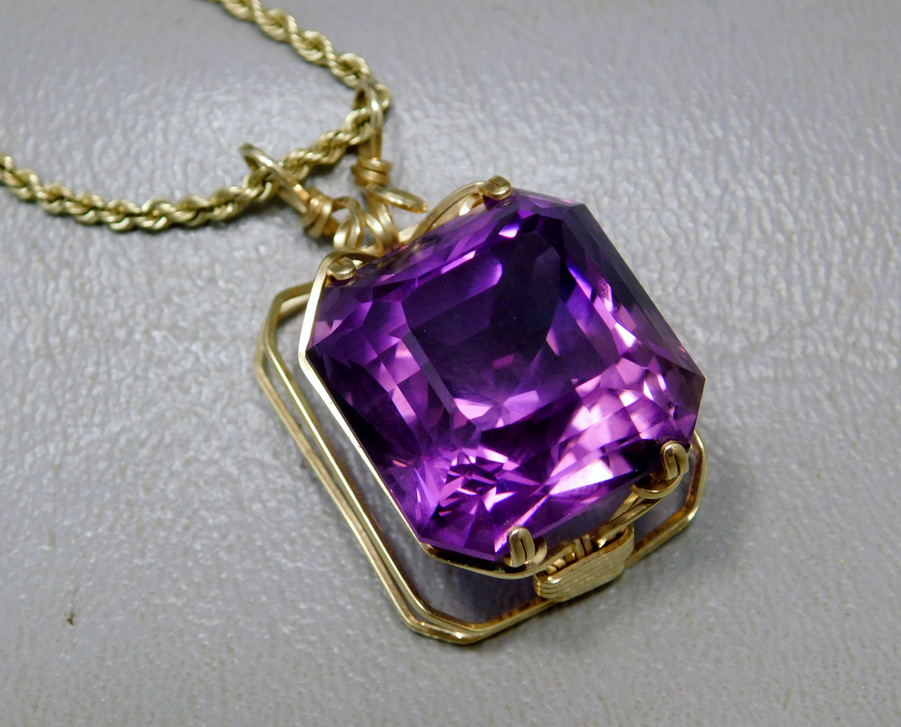We are excited to be bringing you our line of small polished semi-precious gemstone slabs that are perfect for creative jewelers, especially wire wrappers and electroformers.

These pieces are called organic shaped cabochons by our customers, in reference to their more natural shapes.
They are slabbed and polished on one side, but left natural rough around the edges.
So you love the organic freeform shaped cabochons, or love all our stunningly beautiful semi-precious gemstone cabochons? But you don’t make jewelry and don’t know anybody who does? Why not considered learning how to wire wrap jewelry and make your own unique necklace? Wire wrapping is fairly easy to learn, requires only a few tools and requires no special equipment, heat, glue, soldering, etc. There is a plethora of information and videos, books, etc. available to teach you the skills you need. There are also lots of companies that sell the supplies you need both online, at jewelry supply stores, at rock and mineral shows, etc.
One of the largest companies is Rio Grande.

So what supplies do you need to do wire wrapping?
Obviously you need the cabochon and you need some wire. Wire is available in several shapes, hardnesses, and materials. I would suggest starting with copper as it is the most inexpensive. Later you can move onto sterling silver, gold filled, or even gold. I recommend starting with the dead soft, because it is easier to manipulate when you are first learning.
You’ll need a set of basic tools to start and, as you learn and grow, you will probably want to expand your collection. You can start with less expensive tools, though if you can make the investment, the better tools are easier to work with and easier on your hands. Tools that fit comfortably in your hands and have soft cushioned handles are better.
Here are the tools you need to start:
Pliers- obviously the most important tool and it helps to have several varieties.The most important ones are:
Round Nose Pliers-these have tapered cone shaped jaws and you will use them for forming loops and making curves. Long jaws and fine tips give you more dexterity.
Chain Nosed Pliers- used for bending wire, opening and closing jump rings, flattening wire ends, and fixing kinks too. These should have tapered ends and be smooth inside, not grooved. Ones with fine tips are better for tucking ends of wires in.
Wire Cutters- used to cut the wire. You need flush wire cutters, where one side is flat, so that your cut wire is perfectly flat. You do not want burs or sharp edges. A fine tip helps you get to tight spots to cut exactly where you want to.
Hammers and mallets- used to flatten wire. Start with a basic rawhide mallet, but you will find you want other varieties.
Mandrels- obviously if you want to make rings you need a ring mandrel to get the perfect round shape and for sizing. Also a bracelet mandrel is great for the same reasons.
Files or sandpaper- All wire wrapped jewelry should be polished to a smooth surface. You will want to file away any rough edges or sharp tips. Some simple files in various sizes and shapes or sand paper in various grits should get you started. Steel wool works great too.
Cabochons- I saved this for last, which is funny since I sell them. But I saved if for last because it is THE most important choice you have to make. When you start out you probably will want to buy some cheap cabs, there are literally thousands out there to choose from. I would recommend using a harder stone, agates or jaspers, to start as you may scratch softer stones with your tools. However after a practice or two, I highly recommend investing in good quality designer cabochons. Who wants to put all that time and work into a custom creation and then put a plain or ordinary stone cabochon into it? Your creation is uniquely yours, but the stone cabochon is the focal point.
Finish something you can be proud to wear, sell, or give away!
And the best place to buy these special high grade designer cabochons? Barlows Gems of course!
 US Dollar
US Dollar
 Australian Dollar
Australian Dollar
 Euro
Euro
 Canadian Dollar
Canadian Dollar
 British Pound Sterling
British Pound Sterling

